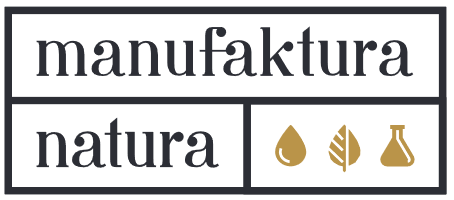Tales of cosmetics ingredients. Part 3.
- today
- label News
- remove_red_eye 3663 views
- comment 0 comments
Relentlessly and with the stubbornness of a maniac, we go further. We will never agree with the fact that cosmetics that are very popular (taking into account the speed with which they disappear from store shelves) are stuffed with ingredients that can be absolutely omitted and that do not have a good effect on our health.
It would seem that abandoning their use is unattainable, expensive and time-consuming. Nothing could be more wrong. You are not condemned to use dangerous detergents in cosmetics. By making conscious choices, you can protect your body from the degrading effects of poisons. It happens that what is supposed to beautify our health (and the environment).
When we remember what the ingredients we describe to you are, we get chills. When we think that a few years ago we unknowingly applied them to the skin ourselves, we feel faint. Grandmothers used to say 'forewarned is always insured', so let's check carefully whether the producers' declarations are really true. We buy a lot of cosmetics while treating allergies and irritations. We are surprised that despite our best efforts, our skin looks worse and worse. What preparations should we choose to be safe for our health?
LANOLIN
Sensitive people should skip this paragraph. We will talk about lanolin, a greasing substance obtained from the secretions of the sheep's sebaceous glands. We are not able to assess your tolerance, but we can openly admit that the awareness that we lubricate our skin with lanolin simply disgusts us. An ingredient of creams, especially moisturizers, ointments, hair products, lipsticks and deodorants, intimate hygiene products. When it causes allergies, it causes long-lasting blemishes on the skin.
If you want to find a natural, equally oily equivalent, we recommend checking the effect of cosmetic butters.
SYNTHETIC FRAGRANCES AND COLORS
In mass production of cosmetics, special attention is paid to making the production process as cheap as possible. Therefore, instead of using more expensive, natural ingredients, companies for the sake of their own good are building laboratories to look for cheaper, chemical substitutes. The efforts pay off - they stuff even synthetic fragrances and dyes into cosmetics.
Untreated noses have a hard time distinguishing the same plant odor from that produced in a test tube. Virtually every scent known to mankind can be reproduced artificially. Producers willingly use them - obtaining ingredients for production is shorter, cheaper, and creating original fragrance compositions becomes much easier. However, little is said about the fact that such synthetic flavors cause allergies, and the molecules accumulate in our body, damaging our health. Recent research results indicate that artificial musk (one of the most popular ingredients in fragrance combinations) disrupts the endocrine system and may cause cancer.
Essential oils can turn out to be perfect carriers of aromas. You will successfully enrich your favorite natural cosmetics with them, give your baths a relaxing fragrance and refresh the fragrance at home.
The same applies to artificial colors. Faster, cheaper, easier - the question is only for whom. Because certainly not for us, consumers.
This text would not make sense if we did not mention environmental action. The production of synthetic ingredients pollutes it, wastewater from factories destroys green spaces, and gaseous waste pollutes the air. The greed of large pseudo-ecological concerns closes their eyes to the fact that they harm not only their customers, but also the planet. We will conclude with a recent high-profile quote in National Geographic magazine, straight from the lips of the Kri Indians: "Only when the last tree is cut down, the last river poisoned, the last fish caught, will you realize that money cannot be eaten."
Ladies and Gentlemen, in order to thoroughly describe all the harmful ingredients that can be found in cosmetics, we would not have enough life for it. In a series of three articles, we presented those that are most often found in everyday products. The myth that natural care costs a lot and does not bring good results is extremely misleading. To take the first step in protecting your own and your family's health, it is enough to understand the problem, change habits and find out that natural products, supplied by plants for centuries, are the only effective and completely safe ones.
All the knowledge we share with you comes from reliable sources. In addition to courses, studies and female intuition, we use the data of the Food and Drug Administration, an authority in research on harmful ingredients of cosmetics, Dr. Henryk S. Różański, several great books and scientific publications:
1. Aubrey Hampton, Ten Synthetic Cosmetic Ingredients to Avoid
2. Organic Health and Beauty articles
3. Research and data The Environmental Working Group
4. Platzek T., Krätke R., K

Comments (0)